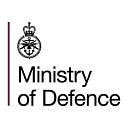TORAL Aviation Detachment explained
The detachment of Pumas were the aerial ‘taxi service’ for NATO troops and equipment around Kabul, here is what you need to know
Road travel in the Afghan capital is potentially very dangerous. There’s an ever-present threat of attacks on civilians and the military from extremists. This is where the RAF’s Puma helicopters come into play.
The Pumas and their crews have helped to provide vital airborne transport to UK and NATO forces since 2015. This included transporting personnel and equipment around the different urban, mountainous and desert terrain in the Kabul area.
Enabling people to travel by air meant that the risk to individuals was significantly reduced. They moved international troops, contractors, embassy staff, advisors and civilians across the capital.
They also supported the deployment of the NATO Security Quick Reaction Force when needed, holding a casualty evacuation standby, so they were ready to launch and recover injured service personnel and get them to a hospital within the ‘golden hour’.
Another role is to transport essential equipment and resupplies to more remote bases. During the Christmas period, the crew delivered morale to NATO troops deployed in Afghanistan, moving large amounts of festive mail sent out by families.
During their deployment, the Pumas racked up a total of;
- 12,800 hours in the air (the equivalent of over 533 days)
- transported 126,000 passengers
- and moved 660,000 kgs of freight.
Made up of three Puma helicopters and around 80 military personnel from Joint Helicopter Command (JHC), the TORAL Aviation Detachment served in Kabul on Op TORAL since 2015 as part of NATO’s Resolute Support Mission.
During this period, the detachment has been formed from 33 Squadron and 230 Squadron, with support from other JHC personnel and units.
“This is a significant time for the Puma Force as an enduring and rewarding operation comes to a close. The commitment and professionalism of the whole team has been exceptional, whether they’ve been deployed or provided support from the UK. I’m extremely proud of everyone and they should look back on all that they have achieved with pride.”
— Group Captain Nick Paton, Puma Force Commander
The Pumas recently returned back to RAF Benson as part of the withdrawal of NATO forces from the country.
The Puma was chosen for a reason. The support helicopter can be used for a variety of roles including; the tactical movement of troops, weapons, ammunition and stores on the battlefield, as well as the extraction of casualties and in response to medical emergencies on the frontline.
The aircraft is capable of carrying 16 passengers, 12 fully equipped troops or up to 2 tonnes of freight. It can also be fitted with up to six stretchers for operations in the casualty evacuation or medical emergency response team role.
Most importantly it can operate in harsh environments, lifting troops, supplies and humanitarian aid wherever needed, especially under hot-and-high conditions. This is especially important as Afghanistan can have hot and arid summers, and then be covered in snow in the winter.
There is also the Kabul smog to consider, the reduced visibility can make flying particularly testing and combined with very congested airspace in and around the city, it’s certainly a challenge at times.
“While deployed one thing that surprised me was the weather. I had heard stories of the Kabul smog but experiencing it was a different matter.”
— Flt Lt Rolleston-Smith, Puma pilot deployed on Operation TORAL in 2019
The Prime Minister has announced that the majority of British forces have now withdrawn from Afghanistan. A small number will remain to provide diplomatic assurance, consistent with our continued diplomatic presence in Afghanistan.
